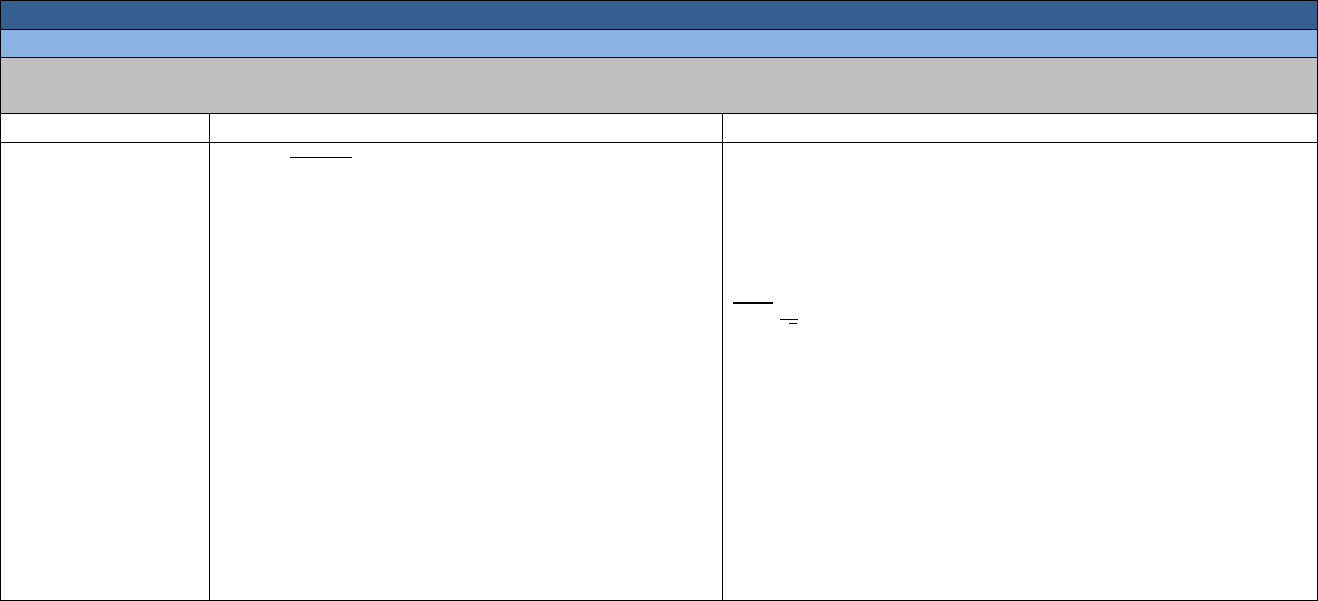
NYSED Algebra I Draft: Specific modeling domains, clusters and standards are indicated by a star symbol ★.
New York State Next Generation Mathematics Learning Standards
Algebra I Crosswalk
Number and Quantity
The Real Number System (N.RN)
Cluster
NYS P-12 CCLS
NYS Next Generation Learning Standard
Use properties of
rational and
irrational numbers.
N-RN.3 Explain why the sum or product of two rational
numbers is rational; that the sum of a rational number and an
irrational number is irrational; and that the product of a
nonzero rational number and an irrational number is
irrational.
AI-N.RN.3 Use properties and operations to understand the
different forms of rational and irrational numbers.
a.) Perform all four arithmetic operations and apply properties to
generate equivalent forms of rational numbers and square roots.
Note: Tasks include rationalizing numerical denominators of the
form
√
where a is an integer and b is a natural number.
b.) Categorize the sum or product of rational or irrational numbers.
• The sum and product of two rational numbers is rational.
• The sum of a rational number and an irrational number is
irrational.
• The product of a nonzero rational number and an irrational
number is irrational.
• The sum and product of two irrational numbers could be
either rational or irrational.
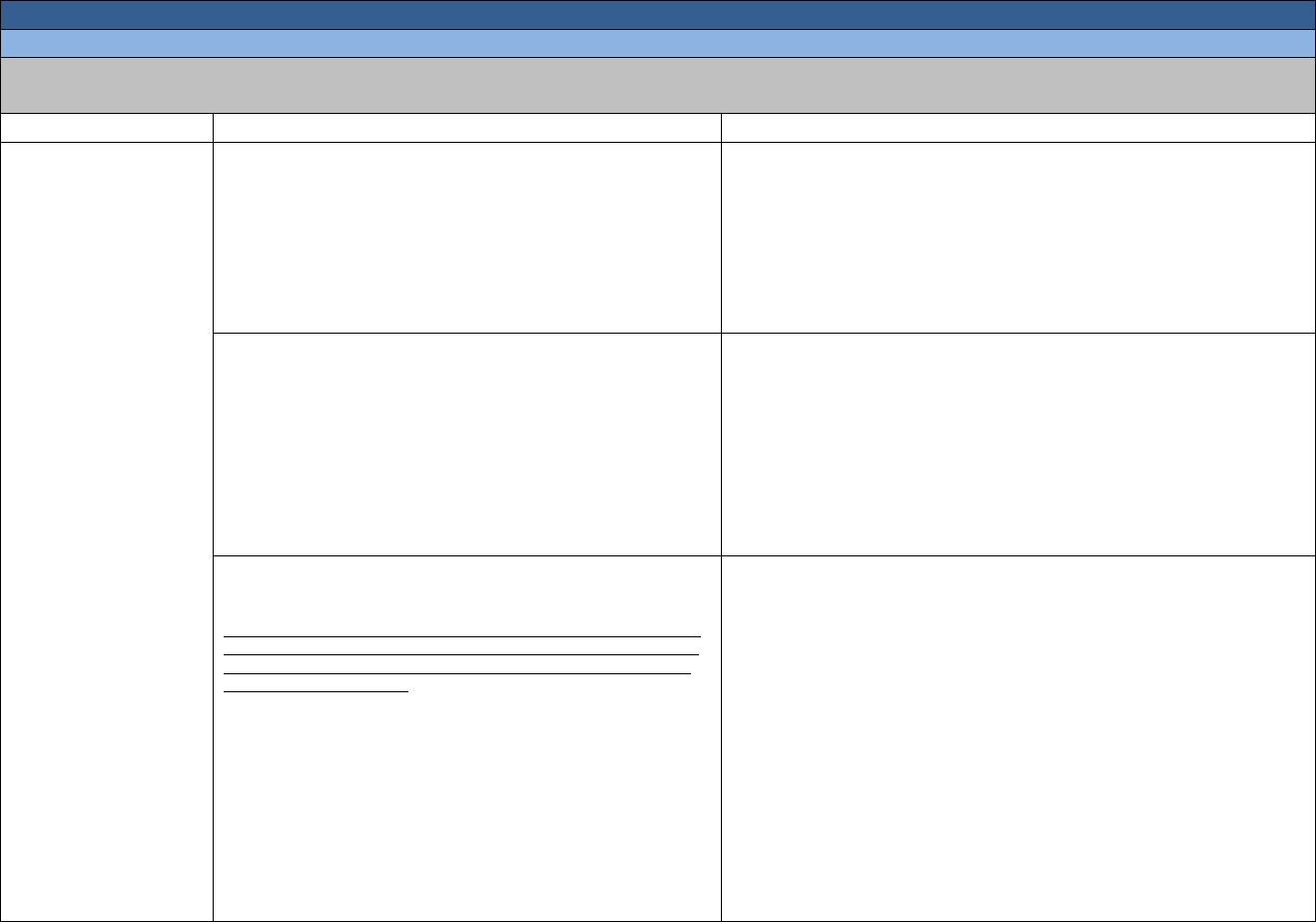
NYSED Algebra I Draft: Specific modeling domains, clusters and standards are indicated by a star symbol ★.
New York State Next Generation Mathematics Learning Standards
Algebra I Crosswalk
Number and Quantity
Quantities (N.Q)
Cluster
NYS P-12 CCLS
NYS Next Generation Learning Standard
Reason quantitatively
and use units to solve
problems.
★
N-Q.1 Use units as a way to understand problems and to
guide the solution of multi-step problems; choose and
interpret units consistently in formulas; choose and interpret
the scale and the origin in graphs and data displays.
AI-N.Q.1 Select quantities and use units as a way to:
i) interpret and guide the solution of multi-step problems;
ii) choose and interpret units consistently in formulas; and
iii) choose and interpret the scale and the origin in graphs and data
displays.
N-Q.2 Define appropriate quantities for the purpose of
descriptive modeling.
PARCC: In Algebra I, this standard will be assessed by ensuring that some
modeling tasks (involving Algebra I content or securely held content from
grades 6-8) require the student to create a quantity of interest in the
situation being described. For example, a quantity of interest is not selected
for the student by the task. For example, In a situation involving data, the
student might autonomously decide that a measure of center is a key
variable in a situation, and then choose to work with the mean.
STANDARD REMOVED
N-Q.3 Choose a level of accuracy appropriate to limitations
on measurement when reporting quantities.
NYSED: In Algebra I, the greatest precision for a result is only at the level
of the least precise data point (example: if units are tenths and hundredths,
then the appropriate preciseness is tenths). Calculation of relative error is
not included in this standard.
AI-N.Q.3 Choose a level of accuracy appropriate to limitations on
measurement and context when reporting quantities.
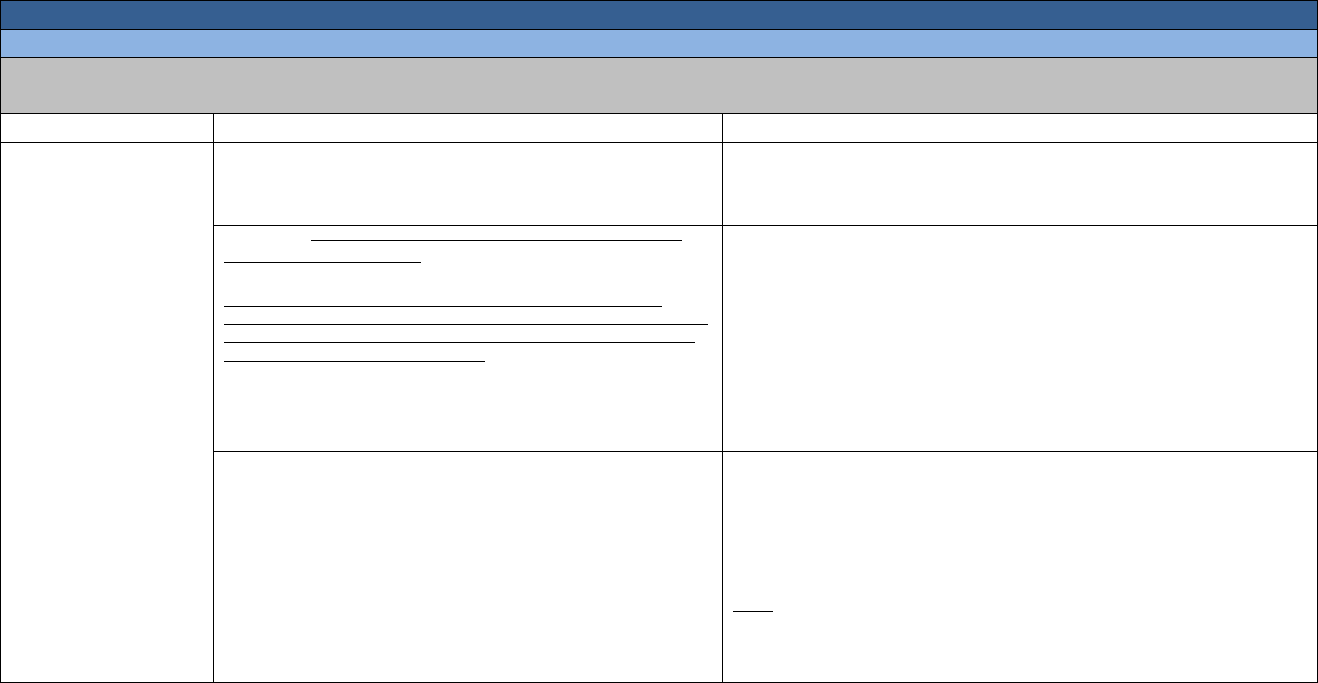
NYSED Algebra I Draft: Specific modeling domains, clusters and standards are indicated by a star symbol ★.
New York State Next Generation Mathematics Learning Standards
Algebra I Crosswalk
Algebra
Seeing Structure in Expressions (A.SSE)
Cluster
NYS P-12 CCLS
NYS Next Generation Learning Standard
Interpret the
structure of
expressions.
A-SSE.1 Interpret expressions that represent a quantity in
terms of its context. ★
AI-A.SSE.1 Interpret expressions that represent a quantity in terms of
its context. ★
A-SSE.1a Interpret parts of an expression, such as terms,
factors, and coefficients.
NYSED: The “such as” listed are not the only parts of an expression
students are expected to know; others include, but are not limited to, degree
of a polynomial, leading coefficient, constant term, and the standard form
of a polynomial (descending exponents).
AI-A.SSE.1a Write the standard form of a given polynomial and
identify the terms, coefficients, degree, leading coefficient, and
constant term.
A-SSE.1b Interpret complicated expressions by viewing one
or more of their parts as a single entity. For example,
interpret P(1+r)
n
as the product of P and a factor not
depending on P.
AI-A.SSE.1b Interpret expressions by viewing one or more of their
parts as a single entity.
e.g., Interpret P(1 + r)
n
as the product of P and a factor not depending
on P.
Note: This standard is a fluency expectation for Algebra I. Fluency
in transforming expressions and chunking (seeing parts of an
expression as a single object) is essential in factoring, completing
the square, and other mindful algebraic calculations.
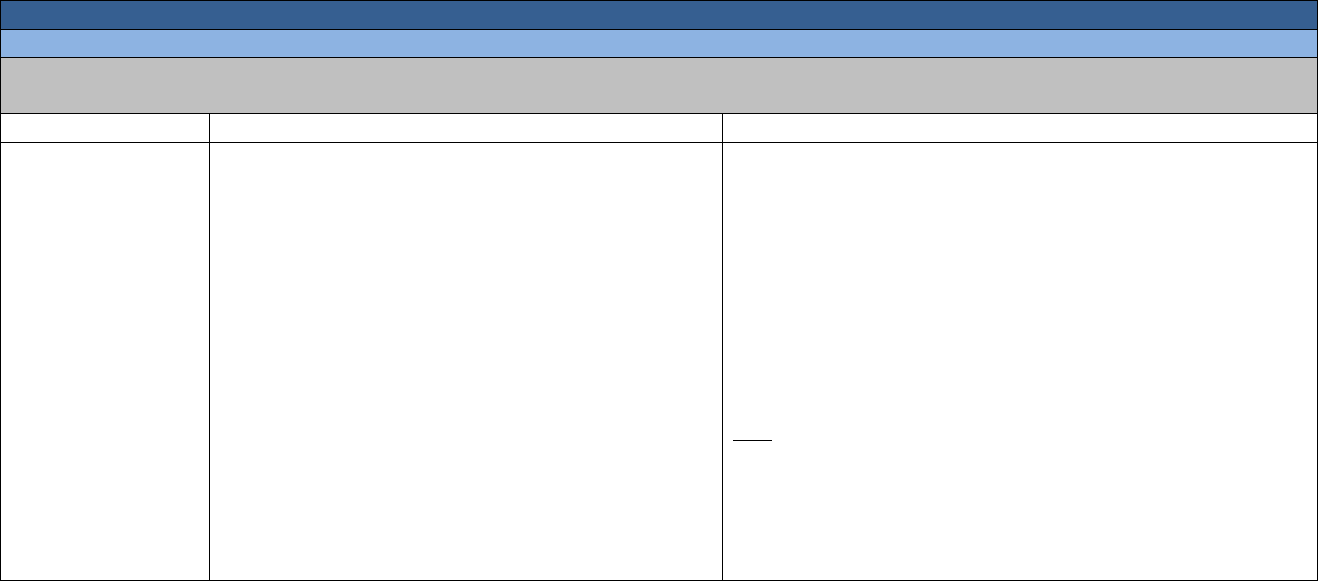
NYSED Algebra I Draft: Specific modeling domains, clusters and standards are indicated by a star symbol ★.
New York State Next Generation Mathematics Learning Standards
Algebra I Crosswalk
Algebra
Seeing Structure in Expressions (A.SSE)
Cluster
NYS P-12 CCLS
NYS Next Generation Learning Standard
Interpret the
structure of
expressions.
A-SSE.2 Use the structure of an expression to identify ways
to rewrite it. For example, see x
4
-y
4
as (x
2
)
2
-(y
2
)
2
, thus
recognizing it as a difference of squares that can be factored
as (x
2
-y
2
)(x
2
+y
2
).
PARCC: Tasks limited to numerical and polynomial expressions in one
variable. Recognize 53
2
-47
2
as a difference of squares and see an
opportunity to rewrite it in the easier-to -evaluate form (53+47)(53-47). See
an opportunity to rewrite a
2
+9a+14 as (a+7)(a+2).
NYSED: Does not include factoring by grouping and factoring the sum and
difference of cubes.
AI-A.SSE.2 Recognize and use the structure of an expression to
identify ways to rewrite it.
(Shared standard with Algebra II)
e.g.,
x
3
– x
2
- x = x(x
2
- x - 1)
53
2
– 47
2
= (53 + 47) (53 - 47)
16x
2
- 36 = (4x)
2
- (6)
2
= (4x + 6) (4x - 6) = 4(2x + 3) (2x - 3) or
16x
2
- 36 = 4(4x
2
- 9) = 4(2x + 3) (2x - 3)
-2x
2
+ 8x + 10 = -2(x
2
– 4x – 5) = -2(x - 5) (x + 1)
x
4
+ 6x
2
- 7 = (x
2
+ 7)(x
2
- 1) = (x
2
+ 7)(x + 1)(x - 1)
Note: Algebra I expressions are limited to numerical and polynomial
expressions in one variable. Use factoring techniques such as
factoring out a greatest common factor, factoring the difference of
two perfect squares, factoring trinomials of the form ax
2
+bx+c
with a lead coefficient of 1, or a combination of methods to factor
completely. Factoring will not involve factoring by grouping and
factoring the sum and difference of cubes.

NYSED Algebra I Draft: Specific modeling domains, clusters and standards are indicated by a star symbol ★.
New York State Next Generation Mathematics Learning Standards
Algebra I Crosswalk
Algebra
Seeing Structure in Expressions (A.SSE)
Cluster
NYS P-12 CCLS
NYS Next Generation Learning Standard
Write expressions in
equivalent forms to
reveal their
characteristics.
★
A-SSE.3 Choose and produce an equivalent form of an
expression to reveal and explain properties of the quantity
represented by the expression.
AI-A.SSE.3 Choose and produce an equivalent form of an expression
to reveal and explain properties of the quantity represented by the
expression.
(Shared standard with Algebra II)
A-SSE.3a Factor quadratic expression to reveal the zeros of
the function it defines.
NYSED: Includes trinomials with leading coefficients other than 1.
STANDARD REMOVED
A-SSE.3b Complete the square in a quadratic expression to
reveal the max and min value of the function it defines.
STANDARD REMOVED
A-SSE.3c Use the properties of exponents to transform
expressions for exponential functions. For example, the
expression 1.15
t
can be rewritten as (1.15
1/12
)
12t
= 1.012
12t
to
reveal the approximate equivalent monthly interest rate if the
annual rate is 15%.
PARCC: Tasks are limited to exponential expressions with integer
exponents. Tasks have a real-world context. As described in the standard,
there is an interplay between the mathematical structure of the expression
and the structure of the situation such that choosing and producing an
equivalent form of the expression reveals something about the situation.
AI-A.SSE.3c Use the properties of exponents to rewrite exponential
expressions.
(Shared standard with Algebra II)
e.g.,
• 3
2x
= (3
2
)
x
= 9
x
• 3
2x+3
= 3
2x
∙ 3
3
=9
x
∙ 27
Note: Exponential expressions will include those with integer
exponents, as well as those whose exponents are linear expressions.
Any linear term in those expressions will have an integer
coefficient. Rational exponents are an expectation for Algebra II.
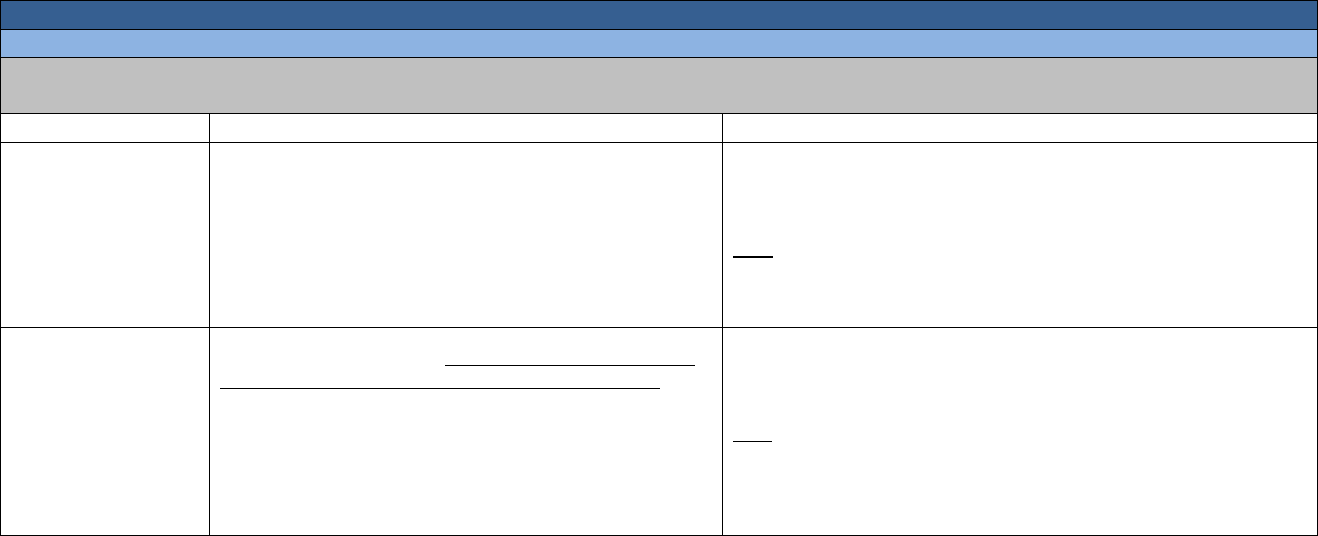
NYSED Algebra I Draft: Specific modeling domains, clusters and standards are indicated by a star symbol ★.
New York State Next Generation Mathematics Learning Standards
Algebra I Crosswalk
Algebra
Arithmetic with Polynomials and Rational Expressions (A.APR)
Cluster
NYS P-12 CCLS
NYS Next Generation Learning Standard
Perform arithmetic
operations on
polynomials.
A-APR.1 Understand that polynomials form a system
analogous to the integers, namely, they are closed under the
operations of addition, subtraction, and multiplication; add,
subtract, and multiply polynomials.
AI-A.APR.1 Add, subtract, and multiply polynomials and recognize
that the result of the operation is also a polynomial. This forms a
system analogous to the integers.
Note: This standard is a fluency recommendation for Algebra I.
Fluency in adding, subtracting and multiplying polynomials
supports students throughout their work in algebra, as well as in
their symbolic work with functions.
Understand the
relationship between
zeros and factors of
polynomials.
A-APR.3 Identify zeros of polynomials when suitable
factorizations are available, and use the zeros to construct a
rough graph of the function defined by the polynomial.
PARCC: Tasks are limited to quadratic and cubic polynomials in which
linear and quadratic factors are available. For example, find the zeros of
(x-2) (x
2
-9).
AI-A.APR.3 Identify zeros of polynomial functions when suitable
factorizations are available.
(Shared standard with Algebra II)
Note: Algebra I tasks will focus on identifying the zeros of quadratic
and cubic polynomial functions. For tasks that involve finding the
zeros of cubic polynomial functions, the linear and quadratic factors of
the cubic polynomial function will be given (e.g., find the zeros of
P(x) = (x - 2)(x
2
- 9)).
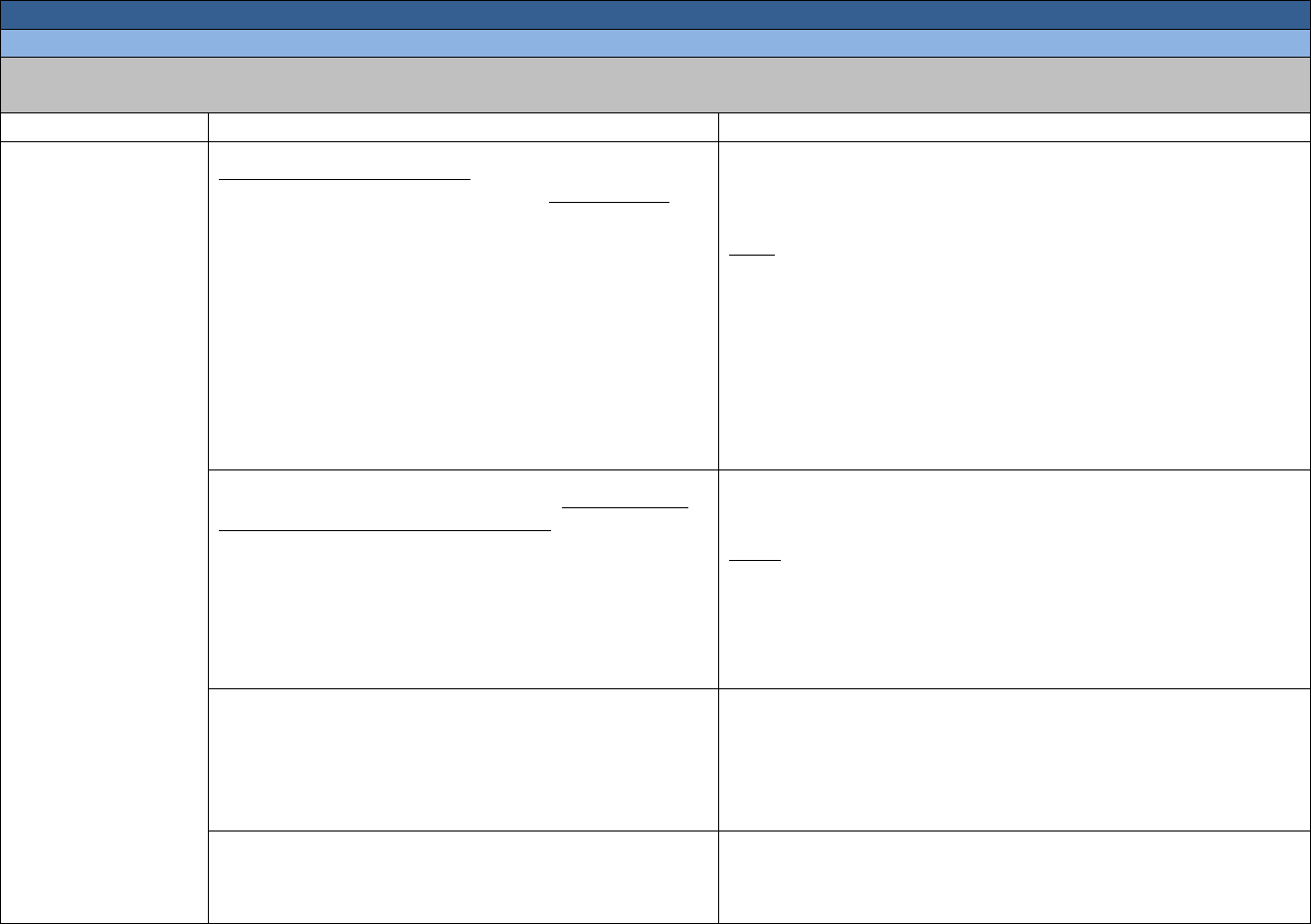
NYSED Algebra I Draft: Specific modeling domains, clusters and standards are indicated by a star symbol ★.
New York State Next Generation Mathematics Learning Standards
Algebra I Crosswalk
Algebra
Creating Equations (A.CED)
Cluster
NYS P-12 CCLS
NYS Next Generation Learning Standard
Create equations that
describe numbers or
relationships.
★
A-CED.1 Create equations and inequalities in one variable
and use them to solve problems. Include equations arising
from linear and quadratic functions, and simple rational and
exponential functions.
PARCC: Tasks are limited to linear, quadratic, or exponential equations
with integer exponents.
AI-A.CED.1 Create equations and inequalities in one variable to
represent a real-world context.
(Shared standard with Algebra II)
Notes:
• This is strictly the development of the model
(equation/inequality).
• Limit equations to linear, quadratic, and exponentials of
the form f(x) = a(b)
x
where a > 0 and b > 0 (b ≠ 1).
• Work with geometric sequences may involve an
exponential equation/formula of the form a
n
= ar
n-1
, where
a is the first term and r is the common ratio.
• Inequalities are limited to linear inequalities.
• Algebra I tasks do not involve compound inequalities.
A-CED.2 Create equations in two or more variables to
represent relationships between quantities; graph equations
on coordinate axes with labels and scales.
AI-A.CED.2 Create equations and linear inequalities in two variables
to represent a real-world context.
Notes:
• This is strictly the development of the model
(equation/inequality).
• Limit equations to linear, quadratic, and exponentials of
the form f(x) = a(b)
x
where a > 0 and b > 0 (b ≠ 1).
A-CED.3 Represent constraints by equations or inequalities,
and by systems of equations and/or inequalities, and interpret
solutions as viable or non-viable options in a modeling
context. For example, represent inequalities describing
nutritional and cost constraints on combinations of different
foods.
AI-A.CED.3 Represent constraints by equations or inequalities, and by
systems of equations and/or inequalities, and interpret solutions as
viable or non-viable options in a modeling
context.
e.g., Represent inequalities describing nutritional and cost constraints
on combinations of different foods.
A-CED.4 Rearrange formulas to highlight a quantity of
interest, using the same reasoning as in solving equations.
For example, rearrange Ohm’s law V=IR to highlight
resistance R.
AI-A.CED.4 Rewrite formulas to highlight a quantity of interest, using
the same reasoning as in solving equations.
e.g., Rearrange Ohm’s law V = IR to highlight resistance R.
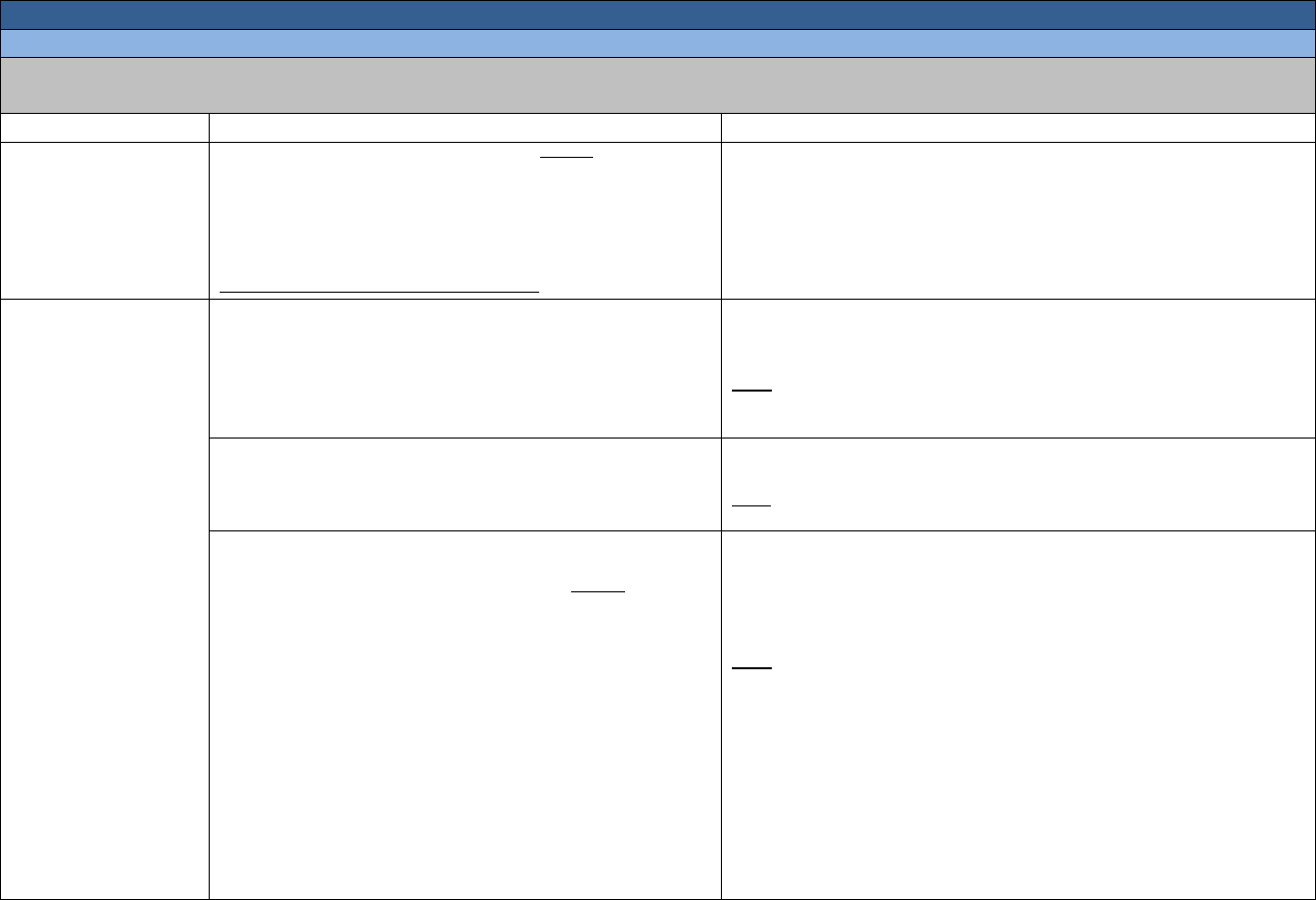
NYSED Algebra I Draft: Specific modeling domains, clusters and standards are indicated by a star symbol ★.
New York State Next Generation Mathematics Learning Standards
Algebra I Crosswalk
Algebra
Reasoning with Equations and Inequalities (A.REI)
Cluster
NYS P-12 CCLS
NYS Next Generation Learning Standard
Understand solving
equations as a
process of reasoning
and explain the
reasoning.
A-REI.1 Explain each step in solving a simple equation as
following from the equality of numbers asserted at the
previous step, starting from the assumption that the original
equation has a solution. Construct a viable argument to
justify a solution method.
PARCC: Tasks are limited to quadratic equations.
AI-A.REI.1a Explain each step when solving a linear or quadratic
equation as following from the equality of numbers asserted at the
previous step, starting from the assumption that the original equation
has a solution. Construct a viable argument to justify a solution
method.
Solve equations and
inequalities in one
variable.
A-REI.3 Solve linear equations and inequalities in one
variable, including equations with coefficients represented
by letters.
AI-A.REI.3 Solve linear equations and inequalities in one variable,
including equations with coefficients represented by letters.
Note: Algebra I tasks do not involve solving compound
inequalities.
A-REI.4 Solve quadratic equations in one variable.
NYSED: Solutions may include simplifying radicals.
AI-A.REI.4 Solve quadratic equations in one variable.
Note: Solutions may include simplifying radicals.
A-REI.4a Use the method of completing the square to
transform any quadratic equation in x into an equation of the
form (x-p)
2
= q that has the same solutions. Derive the
quadratic formula from this form.
AI-A.REI.4a Use the method of completing the square to transform
any quadratic equation in x into an equation of the form (x - p)
2
= q
that has the same solutions. Understand that the quadratic formula is a
derivative of this process.
Note: When utilizing the method of completing the square, the
quadratic's leading coefficient will be 1 and the coefficient of the
linear term will be limited to even (after the possible factoring out
of a GCF). Students in Algebra I should be able to complete the
square in which manipulating the given quadratic equation yields
an integer value for q.

NYSED Algebra I Draft: Specific modeling domains, clusters and standards are indicated by a star symbol ★.
New York State Next Generation Mathematics Learning Standards
Algebra I Crosswalk
Algebra
Reasoning with Equations and Inequalities (A.REI)
Cluster
NYS P-12 CCLS
NYS Next Generation Learning Standard
Solve equations and
inequalities in one
variable.
A-REI.4b Solve quadratic equations by inspection (e.g., for
x
2
=49), taking square roots, completing the square, the
quadratic formula and factoring, as appropriate to the initial
form of the equation. Recognize when the quadratic formula
gives complex solutions and write them as a + bi, a - bi for
real numbers a and b.
PARCC: Tasks do not require students to write solutions for quadratic
equations that have roots with non-zero imaginary parts. However, tasks can
require the student to recognize cases in which a quadratic equation has no
real solutions.
AI-A.REI.4b Solve quadratic equations by:
i) inspection,
ii) taking square roots,
iii) factoring,
iv) completing the square,
v) the quadratic formula, and
vi) graphing.
Recognize when the process yields no real solutions.
(Shared standard with Algebra II)
Notes:
• Solutions may include simplifying radicals or writing
solutions in simplest radical form.
• An example for inspection would be x
2
= 49, where a student
should know that the solutions would include 7 and -7.
• When utilizing the quadratic formula, there are no
coefficient limits.
• The discriminant is a sufficient way to recognize when the
process yields no real solutions.

NYSED Algebra I Draft: Specific modeling domains, clusters and standards are indicated by a star symbol ★.
New York State Next Generation Mathematics Learning Standards
Algebra I Crosswalk
Algebra
Reasoning with Equations and Inequalities (A.REI)
Cluster
NYS P-12 CCLS
NYS Next Generation Learning Standard
Solve systems of
equations.
A-REI.5 Prove that, given a system of two equations in two
variables, replacing one equation by the sum of that equation
and a multiple of the other produces a system with the same
solutions.
STANDARD REMOVED
A-REI.6 Solve systems of linear equations exactly and
approximately (e.g., with graphs), focusing on pairs of linear
equations in two variables.
PARCC: Tasks have a real-world context. Tasks have hallmarks of
modeling as a mathematical practice (less defined tasks, more of the
modeling cycle, etc.).
AI-A.REI.6a Solve systems of linear equations in two variables both
algebraically and graphically.
Note: Algebraic methods include both elimination and substitution.
AI-A.REI.7a Solve a system, with rational solutions, consisting of a
linear equation and a quadratic equation (parabolas only) in two
variables both algebraically and graphically.
(Shared standard with Algebra II)

NYSED Algebra I Draft: Specific modeling domains, clusters and standards are indicated by a star symbol ★.
New York State Next Generation Mathematics Learning Standards
Algebra I Crosswalk
Algebra
Reasoning with Equations and Inequalities (A.REI)
Cluster
NYS P-12 CCLS
NYS Next Generation Learning Standard
Represent and solve
equations and
inequalities
graphically.
A-REI.10 Understand that the graph of an equation in two
variables is the set of all its solutions plotted in the
coordinate plane, often forming a curve (which could be a
line).
AI-A.REI.10 Understand that the graph of an equation in two variables
is the set of all its solutions plotted in the coordinate plane.
Note: Graphing linear equations is a fluency recommendation for
Algebra I. Students become fluent in solving characteristic
problems involving the analytic geometry of lines, such as writing
down the equation of a line given a point and a slope. Such fluency
can support them in solving less routine mathematical problems
involving linearity; as well as modeling linear phenomena.
A-REI.11 Explain why the x-coordinates of the points where
the graphs of the equations y=f(x) and y=g(x) intersect are
the solutions of the equation f(x)=g(x); find the solutions
approximately, e.g., using technology to graph the functions,
make tables of values, or find successive approximations.
Include cases where f(x) and/or g(x) are linear, polynomial,
rational, absolute value, exponential, and logarithmic
functions. ★
PARCC: Tasks that assess conceptual understanding of the indicated
concept may involve any of the function types mentioned in the standard
except exponential and logarithmic functions. Finding the solutions
approximately is limited to cases where f(x) and g(x) are polynomial
functions.
AI-A.REI.11 Given the equations y = f(x) and y = g(x):
i) recognize that each x-coordinate of the intersection(s) is the solution
to the equation f(x) = g(x);
ii)find the solutions approximately using technology to graph the
functions or make tables of values; and
iii) interpret the solution in context. ★
(Shared standard with Algebra II)
Notes: Algebra I tasks are limited to cases where f(x) and g(x) are
linear, polynomial, absolute value, and exponential functions of the
form f(x) = a(b)
x
where a > 0 and b > 0 (b ≠ 1).
Students should be taught to find the solutions approximately by
using technology to graph the functions and by making tables of
values. When solving any problem, students can choose either
strategy.

NYSED Algebra I Draft: Specific modeling domains, clusters and standards are indicated by a star symbol ★.
New York State Next Generation Mathematics Learning Standards
Algebra I Crosswalk
Algebra
Reasoning with Equations and Inequalities (A.REI)
Cluster
NYS P-12 CCLS
NYS Next Generation Learning Standard
Represent and solve
equations and
inequalities
graphically.
A-REI.12 Graph the solutions to a linear inequality in two
variables as a half-plane (excluding the boundary in the case
of a strict inequality), and graph the solution set to a system
of linear inequalities in two variables as the intersection of
the corresponding half-planes.
AI-A.REI.12 Graph the solutions to a linear inequality in two variables
as a half-plane (excluding the boundary in the case of a strict
inequality), and graph the solution set to a system of linear inequalities
in two variables as the intersection of the corresponding half-planes.
Note: Graphing linear equations is a fluency recommendation for
Algebra I. Students become fluent in solving characteristic
problems involving the analytic geometry of lines, such as writing
down the equation of a line given a point and a slope. Such fluency
can support them in solving less routine mathematical problems
involving linearity; as well as modeling linear phenomena
(including modeling using systems of linear inequalities in two
variables).
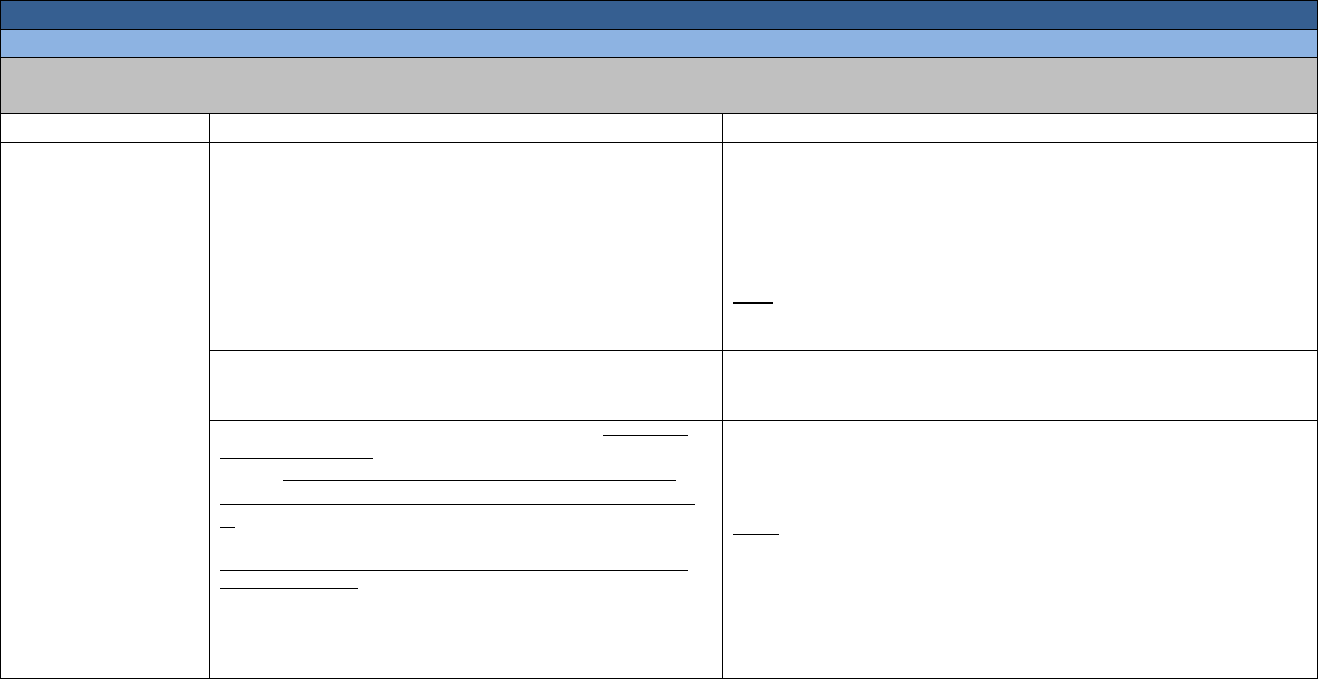
NYSED Algebra I Draft: Specific modeling domains, clusters and standards are indicated by a star symbol ★.
New York State Next Generation Mathematics Learning Standards
Algebra I Crosswalk
Functions
Interpreting Functions (F.IF)
Cluster
NYS P-12 CCLS
NYS Next Generation Learning Standard
Understand the
concept of a function
and use function
notation.
F-IF.1 Understand that a function from one set (called the
domain) to another set (called the range) assigns to each
element of the domain exactly one element of the range. If f
is a function and x is an element of its domain, then f(x)
denotes the output of f corresponding to the input x. The
graph of f is the graph of the equation y = f(x).
AI-F.IF.1 Understand that a function from one set (called the domain)
to another set (called the range) assigns to each element of the domain
exactly one element of the range. If f is a function and x is an element
of its domain, then f(x) denotes the output of f corresponding to the
input x. The graph of f is the graph of the equation y = f(x).
Note: Domain and range can be expressed using inequalities, set
builder notation, verbal description, and interval notations for
functions of subsets of real numbers to the real numbers.
F-IF.2 Use function notation, evaluate functions for inputs in
their domains, and interpret statements that use function
notation in terms of a context.
AI-F.IF.2 Use function notation, evaluate functions for inputs in their
domains, and interpret statements that use function notation in terms of
a context.
F-IF.3 Recognize that sequences are functions, sometimes
defined recursively, whose domain is a subset of the
integers. For example, the Fibonacci sequence is defined
recursively by f(0) = f(1) = 1, f(n+1) = f(n) + f(n-1) for n ≥
1.
PARCC: This standard is part of the Major work in Algebra I and will be
assessed accordingly.
AI-F.IF.3 Recognize that a sequence is a function whose domain is a
subset of the integers.
(Shared standard with Algebra II)
Notes:
• Sequences (arithmetic and geometric) will be written
explicitly and only in subscript notation.
• Work with geometric sequences may involve an
exponential equation/formula of the form a
n
= ar
n-1
, where
a is the first term and r is the common ratio.

NYSED Algebra I Draft: Specific modeling domains, clusters and standards are indicated by a star symbol ★.
New York State Next Generation Mathematics Learning Standards
Algebra I Crosswalk
Functions
Interpreting Functions (F.IF)
Cluster
NYS P-12 CCLS
NYS Next Generation Learning Standard
Interpret functions
that arise in
applications in terms
of the context.
★
F-IF.4 For a function that models a relationship between two
quantities, interpret key features of graphs and tables in
terms of the quantities, and sketch graphs showing key
features given a verbal description of the relationship. Key
features include: intercepts; intervals where the function is
increasing, decreasing, positive, or negative; relative
maximums and minimums; symmetries; end behavior; and
periodicity.
PARCC: Tasks have a real-world context. Tasks are limited to linear
functions, quadratic functions, square root functions, cube root functions,
piece-wise defined functions (including step functions and absolute value
functions) and exponential functions with domains in the integers.
AI-F.IF.4 For a function that models a relationship between two
quantities:
i) interpret key features of graphs and tables in terms of the quantities;
and
ii) sketch graphs showing key features given a verbal description of
the relationship.
(Shared standard with Algebra II)
Notes:
• Algebra I key features include the following: intercepts,
zeros; intervals where the function is increasing, decreasing,
positive, or negative; maxima, minima; and symmetries.
• Tasks have a real-world context and are limited to the
following functions: linear, quadratic, square root, piece-wise
defined (including step and absolute value), and exponential
functions of the form f(x) = a(b)
x
where a > 0 and b > 0
(b≠1).
F-IF.5 Relate the domain of a function to its graph and,
where applicable, to the quantitative relationship it describes.
For example, if the function h(n) gives the number of person-
hours it takes to assemble n engines in a factory, then the
positive integers would be an appropriate domain for the
function.
AI-F.IF.5 Determine the domain of a function from its graph and,
where applicable, identify the appropriate domain for a function in
context.
F-IF.6 Calculate and interpret the average rate of change of
a function (presented symbolically or as a table) over a
specified interval. Estimate the rate of change from a graph.
PARCC: Tasks have a real-world context. Tasks are limited to linear
functions, quadratic functions, square root functions, cube root functions,
piece-wise defined functions (including step functions and absolute value
functions) and exponential functions with domains in the integers.
AI-F.IF.6 Calculate and interpret the average rate of change of a
function over a specified interval.
(Shared standard with Algebra II)
Notes:
• Functions may be presented by function notation, a table of
values, or graphically.
• Algebra I tasks have a real-world context and are limited to
the following functions: linear, quadratic, square root, piece-
wise defined (including step and absolute value), and
exponential functions of the form f(x) = a(b)
x
where a > 0
and b > 0, (b ≠ 1).
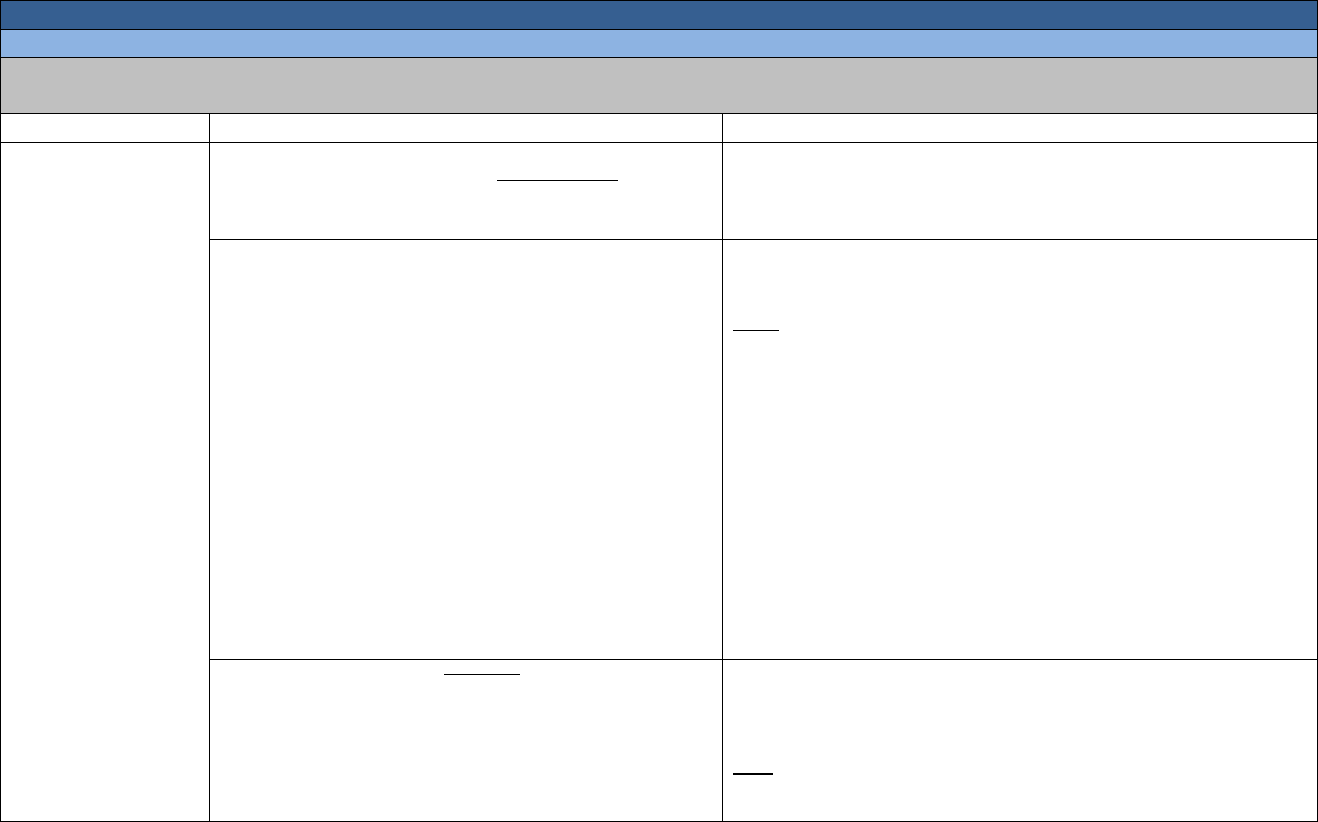
NYSED Algebra I Draft: Specific modeling domains, clusters and standards are indicated by a star symbol ★.
New York State Next Generation Mathematics Learning Standards
Algebra I Crosswalk
Functions
Interpreting Functions (F.IF)
Cluster
NYS P-12 CCLS
NYS Next Generation Learning Standard
Analyze functions
using different
representations.
F-IF.7 Graph functions expressed symbolically and show
key features of the graph, by hand in simple cases and using
technology for more complicated cases. ★
AI-F.IF.7 Graph functions and show key features of the graph by hand
and by using technology where appropriate. ★
(Shared standard with Algebra II)
F-IF.7a Graph linear and quadratic functions and show
intercepts, maxima, and minima.
AI-F.IF.7a Graph linear, quadratic, and exponential functions and
show key features.
Notes:
• Algebra I key features include the following: intercepts,
zeros; intervals where the function is increasing,
decreasing, positive, or negative; maxima, minima; and
symmetries.
• Exponential functions are of the form f(x) = a(b)
x
where
a > 0 and b > 0 (b ≠ 1).
• Graphing linear functions is a fluency recommendation
for Algebra I. Students become fluent in solving
characteristic problems involving the analytic geometry of
lines, such as writing down the equation of a line given a
point and a slope. Such fluency can support them in
solving less routine mathematical problems involving
linearity; as well as modeling linear phenomena.
F-IF.7b Graph square root, cube root, and piecewise-defined
functions, including step functions and absolute value
functions.
AI-F.IF.7b Graph square root, and piecewise-defined functions,
including step functions and absolute value functions and show key
features.
Note: Algebra I key features include the following: intercepts,
zeros; intervals where the function is increasing, decreasing,
positive, or negative; maxima, minima; and symmetries.
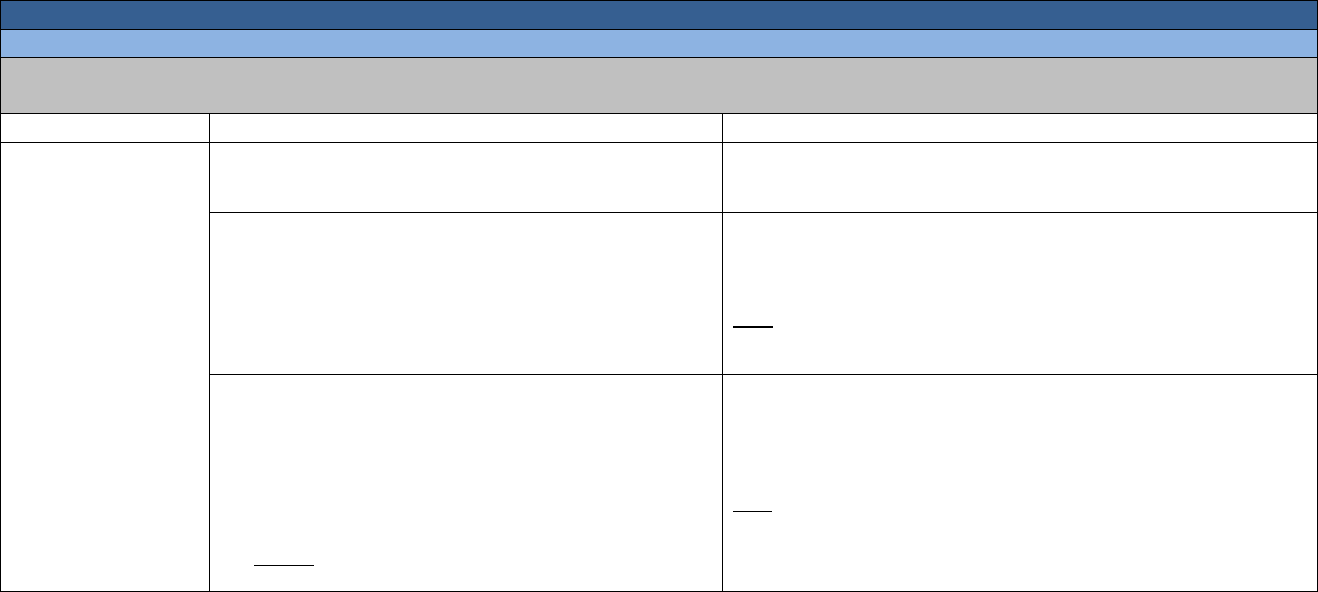
NYSED Algebra I Draft: Specific modeling domains, clusters and standards are indicated by a star symbol ★.
New York State Next Generation Mathematics Learning Standards
Algebra I Crosswalk
Functions
Interpreting Functions (F.IF)
Cluster
NYS P-12 CCLS
NYS Next Generation Learning Standard
Analyze functions
using different
representations.
F-IF.8 Write a function defined by an expression in different
but equivalent forms to reveal and explain different
properties of the function.
AI-F.IF.8 Write a function in different but equivalent forms to reveal
and explain different properties of the function.
(Shared standard with Algebra II)
F-IF.8a Use the process of factoring and completing the
square in a quadratic function to show zeros, extreme values,
and symmetry of the graph, and interpret these in terms of a
context.
AI-F.IF.8a For a quadratic function, use an algebraic process to
find zeros, maxima, minima, and symmetry of the graph, and interpret
these in terms of context.
Note: Algebraic processes include but not limited to factoring,
completing the square, use of the quadratic formula, and the use of
the axis of symmetry.
F-IF.9 Compare properties of two functions each
represented in a different way (algebraically, graphically,
numerically in tables, or by verbal descriptions). For
example, given a graph of one quadratic function and an
algebraic expression for another, say which has the larger
maximum.
PARCC: Tasks are limited to linear functions, quadratic functions, square
root, cube root, piecewise defined (including step functions and absolute
value functions), and exponential functions with domains in the integers.
AI-F.IF.9 Compare properties of two functions each represented in a
different way (algebraically, graphically, numerically in tables, or by
verbal descriptions).
(Shared standard with Algebra II)
Note: Algebra I tasks are limited to the following functions: linear,
quadratic, square root, piecewise defined (including step and absolute
value), and exponential functions of the form f(x) = a(b)
x
where a >
0 and b > 0 (b ≠ 1).
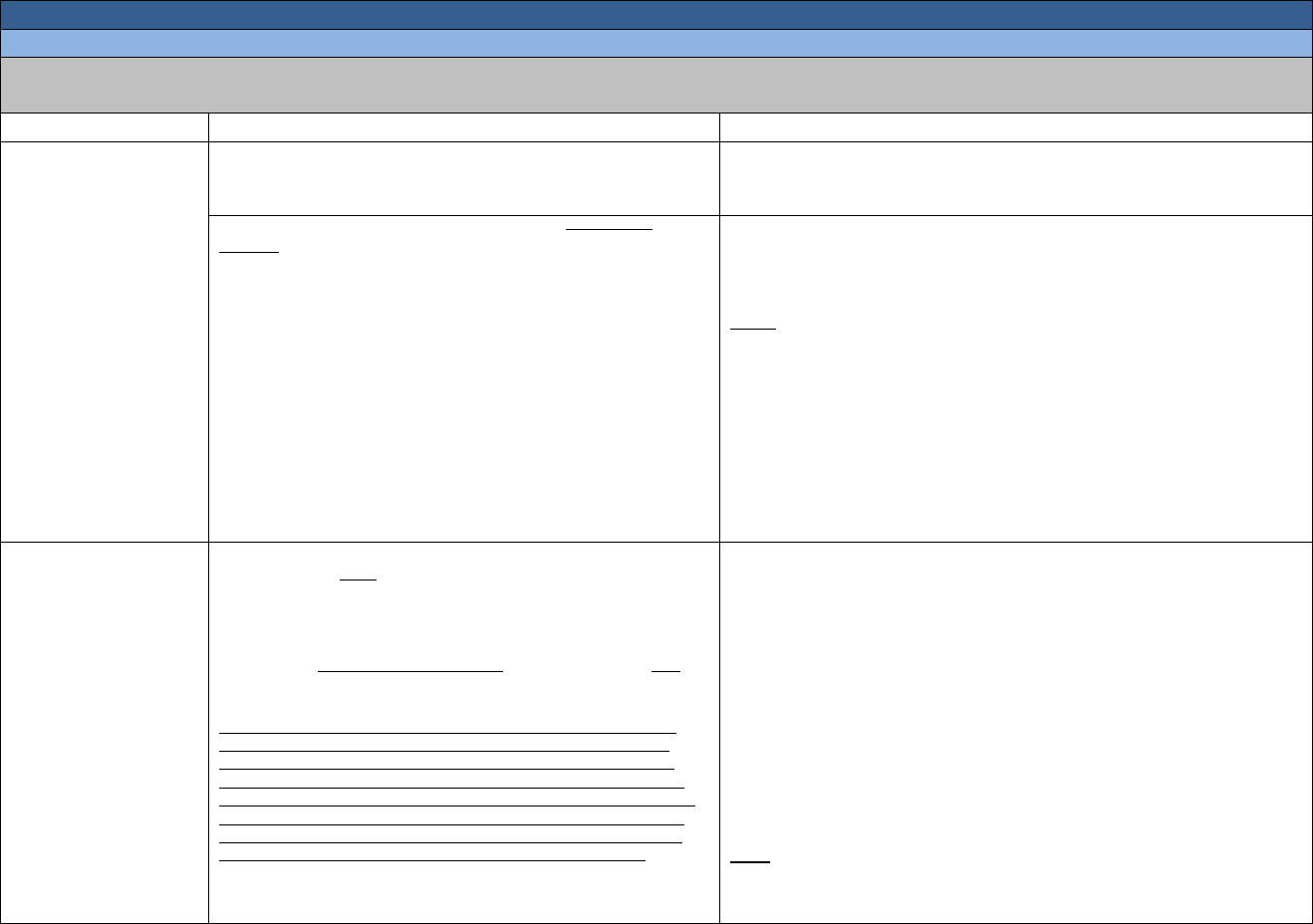
NYSED Algebra I Draft: Specific modeling domains, clusters and standards are indicated by a star symbol ★.
New York State Next Generation Mathematics Learning Standards
Algebra I Crosswalk
Functions
Building Functions (F.BF)
Cluster
NYS P-12 CCLS
NYS Next Generation Learning Standard
Build a function that
models a relationship
between two
quantities.
F-BF.1 Write a function that describes a relationship
between two quantities. ★
AI-F.BF.1 Write a function that describes a relationship between two
quantities. ★
(Shared standard with Algebra II)
F-BF.1a Determine an explicit expression, a recursive
process, or steps for calculation from a context.
PARCC: Tasks have a real-world context. Tasks are limited to linear,
quadratic and exponential functions with domains in the integers.
AI-F.BF.1a Determine a function from context. Define a sequence
explicitly or steps for calculation from a context.
(Shared standard with Algebra II)
Notes:
• Algebra I tasks are limited to linear, quadratic and
exponential functions of the form f(x) = a(b)
x
where a > 0
and b > 0 (b ≠ 1).
• Work with geometric sequences may involve an
exponential equation/formula of the form a
n
= ar
n-1
, where
a is the first term and r is the common ratio.
• Sequences will be written explicitly and only in subscript
notation.
Build new functions
from existing
functions.
F-BF.3 Identify the effect on the graph of replacing f(x) by
f(x) + k, k f(x), f(kx), and f(x + k) for specific values of k
(both positive and negative); find the value of k given the
graphs. Experiment with cases and illustrate an explanation
of the effects on the graph using technology. Include
recognizing even and odd functions from their graphs and
algebraic expressions for them.
PARCC: Identifying the effect on the graph of replacing f(x) by f(x) +k,
kf(x), and f(x+k) for specific values of k (both positive and negative) is
limited to linear and quadratic functions. Experimenting with cases and
illustrating an explanation of the effects on the graph using technology is
limited to linear functions, quadratic functions, square root functions, cube
root functions, piecewise-defined functions (including step functions and
absolute value functions), and exponential functions with domains in the
integers. Tasks do not involve recognizing even and odd functions.
AI-F.BF.3a Using f(x) + k, k f(x), and f(x + k):
i) identify the effect on the graph when replacing f(x) by f(x) + k,
k f(x), and f(x + k) for specific values of k (both positive and negative);
ii) find the value of k given the graphs;
iii) write a new function using the value of k; and
iv) use technology to experiment with cases and explore the effects on
the graph.
(Shared standard with Algebra II)
Note: Tasks are limited to linear, quadratic, square root, and
absolute value functions; and exponential functions of the form
f(x) = a(b)
x
where a > 0 and b > 0 (b ≠ 1).

NYSED Algebra I Draft: Specific modeling domains, clusters and standards are indicated by a star symbol ★.
New York State Next Generation Mathematics Learning Standards
Algebra I Crosswalk
Functions
Linear, Quadratic and Exponential Models (F.LE) ★
Cluster
NYS P-12 CCLS
NYS Next Generation Learning Standard
Construct and compare
linear, quadratic and
exponential models and solve
problems
F-LE.1 Distinguish between situations that can be
modeled with linear functions and with exponential
functions.
AI-F.LE.1 Distinguish between situations that can be modeled with
linear functions and with exponential functions.
F-LE.1a Prove that linear functions grow by equal
differences over equal intervals, and that
exponential functions grow by equal factors over
equal intervals.
AI-F.LE.1a Justify that a function is linear because it grows by equal
differences over equal intervals, and that a function is exponential
because it grows by equal factors over equal intervals.
F-LE.1b Recognize situations in which one
quantity changes at a constant rate per unit interval
relative to another.
AI-.F.LE.1b Recognize situations in which one quantity changes at a
constant rate per unit interval relative to another, and therefore can be
modeled linearly.
e.g., A flower grows two inches per day.
F-LE.1c Recognize situations in which a quantity
grows or decays by a constant percent rate per unit
interval relative to another.
AI-F.LE.1c Recognize situations in which a quantity grows or decays
by a constant percent rate per unit interval relative to another, and
therefore can be modeled exponentially.
e.g., A flower doubles in size after each day.
F-LE.2 Construct linear and exponential functions,
including arithmetic and geometric sequences,
given a graph, a description of a relationship, or two
input-output pairs (include reading these from a
table).
PARCC: Tasks are limited to constructing linear and exponential
functions in simple context (not multi-step).
AI-F.LE.2 Construct a linear or exponential function symbolically
given:
i) a graph;
ii) a description of the relationship;
iii) two input-output pairs (include reading these from a table).
(Shared standard with Algebra II)
Note: Tasks are limited to constructing linear and exponential functions
in simple context (not multi-step).
F-LE.3 Observe using graphs and tables that a
quantity increasing exponentially eventually
exceeds a quantity increasing linearly,
quadratically, or (more generally) as a polynomial
function.
AI-F.LE.3 Observe using graphs and tables that a quantity increasing
exponentially eventually exceeds a quantity increasing linearly,
quadratically, or (more generally) as a polynomial function.

NYSED Algebra I Draft: Specific modeling domains, clusters and standards are indicated by a star symbol ★.
New York State Next Generation Mathematics Learning Standards
Algebra I Crosswalk
Functions
Linear, Quadratic and Exponential Models (F.LE) ★
Cluster
NYS P-12 CCLS
NYS Next Generation Learning Standard
Interpret expressions for
functions in terms of the
situation they model.
F-LE.5 Interpret the parameters in a linear or
exponential function in terms of a context.
PARCC: Tasks have a real-world context. Exponential functions
are limited to those with domains in the integers.
AI-F.LE.5 Interpret the parameters in a linear or exponential function
in terms of a context.
(Shared standard with Algebra II)
Note: Tasks have a real-world context. Exponential functions are
limited to those with domains in the integers and are of the form
f(x) = a(b)
x
where a > 0 and b > 0 (b ≠ 1).

NYSED Algebra I Draft: Specific modeling domains, clusters and standards are indicated by a star symbol ★.
New York State Next Generation Mathematics Learning Standards
Algebra I Crosswalk
Statistics and Probability
Interpreting Categorical and Quantitative Data (S.ID)
Cluster
NYS P-12 CCLS
NYS Next Generation Learning Standard
Summarize, represent, and
interpret data on a single
count or measurement
variable.
S-ID.1 Represent data with plots on the real number
line (dot plots, histograms, and box plots).
AI-S.ID.1 Represent data with plots on the real number line (dot plots,
histograms, and box plots).
S-ID.2 Use statistics appropriate to the shape of the
data distribution to compare center (median, mean)
and spread (inter-quartile range, standard deviation) of
two or more different data sets.
AI-S.ID.2 Use statistics appropriate to the shape of the data
distribution to compare center (median, mean) and spread (inter-
quartile range, sample standard deviation) of two or more different data
sets.
Note: Values in the given data sets will represent samples of larger
populations. The calculation of standard deviation will be based on
the sample standard deviation formula . The sample
standard deviation calculation will be used to make a statement
about the population standard deviation from which the sample
was drawn.
S-ID.3 Interpret differences in shape, center, and
spread in the context of the data sets, accounting for
possible effects of extreme data points (outliers).
AI-S.ID.3 Interpret differences in shape, center, and spread in the
context of the data sets, accounting for possible effects of extreme data
points (outliers).

NYSED Algebra I Draft: Specific modeling domains, clusters and standards are indicated by a star symbol ★.
New York State Next Generation Mathematics Learning Standards
Algebra I Crosswalk
Statistics and Probability
Interpreting Categorical and Quantitative Data (S.ID)
Cluster
NYS P-12 CCLS
NYS Next Generation Learning Standard
Summarize, represent, and
interpret data on two
categorical and quantitative
variables.
S-ID.5 Summarize categorical data for two categories
in two-way frequency tables. Interpret relative
frequencies in the context of the data (including joint,
marginal, and conditional relative frequencies).
Recognize possible associations and trends in the
data.
AI-S.ID.5 Summarize categorical data for two categories in two-way
frequency tables. Interpret relative frequencies in the context of the
data (including joint, marginal, and conditional relative frequencies).
Recognize possible associations and trends in the data.
S-ID.6 Represent data on two quantitative variables
on a scatter plot, and describe how the variables are
related.
AI-S.ID.6 Represent bivariate data on a scatter plot, and describe how
the variables’ values are related.
Note: It’s important to keep in mind that the data must be linked
to the same “subjects,” not just two unrelated quantitative
variables; being careful not to assume a relationship between the
actual variables (correlation/causation issue).
S-ID.6a Fit a function to the data; use functions fitted
to data to solve problems in the context of the data.
Use given functions or choose a function suggested by
the context. Emphasize linear, quadratic, and
exponential models.
PARCC: Tasks have real world context. Exponential functions are
limited to those with domains in the integers.
NYSED: Includes the regression capabilities of the calculator.
AI-S.ID.6a Fit a function to real-world data; use functions fitted to
data to solve problems in the context of the data.
(Shared standard with Algebra II)
Note: Algebra I emphasis is on linear models and includes the
regression capabilities of the calculator.
S-ID.6b Informally assess the fit of a function by
plotting and analyzing residuals.
NYSED: Includes creating residual plots using the capabilities of
the calculator (not manually).
STANDARD REMOVED
S-ID.6c Fit a linear function for a scatter plot that
suggests a linear association.
NYSED: Both correlation coefficient and residuals will be
addressed in this standard.
STANDARD REMOVED

NYSED Algebra I Draft: Specific modeling domains, clusters and standards are indicated by a star symbol ★.
New York State Next Generation Mathematics Learning Standards
Algebra I Crosswalk
Statistics and Probability
Interpreting Categorical and Quantitative Data (S.ID)
Cluster
NYS P-12 CCLS
NYS Next Generation Learning Standard
Interpret linear models.
S-ID.7 Interpret the slope (rate of change) and the
intercept (constant term) of a linear model in the
context of the data.
AI-S.ID.7 Interpret the slope (rate of change) and the intercept
(constant term) of a linear model in the context of the data.
S-ID.8 Compute (using technology) and interpret the
correlation coefficient of a linear fit.
AI-S.ID.8 Calculate (using technology) and interpret the correlation
coefficient of a linear fit.
S-ID.9 Distinguish between correlation and causation.
AI-S.ID.9 Distinguish between correlation and causation.
